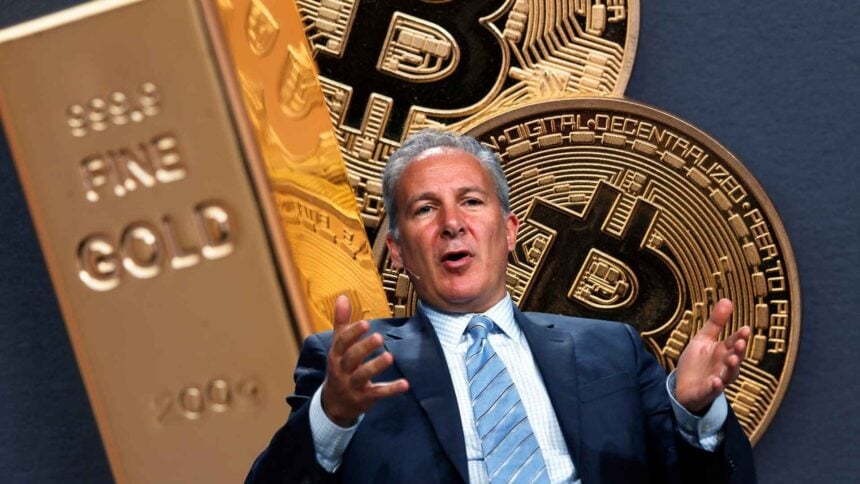Gold bugs had fresh bragging rights this week and Peter Schiff wasted no time pressing the point. The economist and longtime Bitcoin critic said on X that “gold is more likely to hit $1 million than Bitcoin,” a provocation that arrived as bullion pushed into uncharted territory and crypto came under pressure.
Schiff’s post followed a furious run that took spot prices to intraday peaks near $4,379 per ounce and kept the metal well bid around the mid-4,300s on Friday.
The rally has been fueled by a familiar mix: intensifying trade friction between the United States and China, steady official-sector buying, and lingering inflation anxiety that keeps investors searching for ballast.
Those drivers helped bullion vault past earlier milestones this week, including the surge chronicled in our coverage, Gold surges to Record $4,240 as investors seek safety amid inflation and conflict fears, and the latest mark, Gold Hits Record $4,326 per Ounce, Tops $30 Trillion Market Cap.
The accumulation by central banks has underpinned prices through bouts of profit taking, while softer Treasury yields have lowered the opportunity cost of holding a non-yielding asset.
Bitcoin, by contrast, traded near 105,000 to 109,000 dollars over the past day, slipping after a choppy stretch tied to U.S. regional bank jitters and policy uncertainty.
It remains positive for 2025 but by a far smaller margin than gold, which is up dramatically this year. That divergence is the backdrop for Schiff’s claim and the skirmish it sparked across crypto-finance social media.
Supporters of Bitcoin countered that short-term lag tells only part of the story. They pointed to the asset’s long-run compounding from near zero to six figures and argued that every dollar added to gold’s price today lengthens Bitcoin’s eventual runway if risk appetite revives.
Some also questioned the plausibility of a seven-figure gold price given above-ground supply estimates and the scale of global reserves that would need to reprice in tandem.
If U.S. growth slows, the Federal Reserve eases further, and trade tensions stay hot, the case for strategic gold hedges remains firm.
If those risks fade, the metal’s momentum could break, especially if real yields climb.
For Bitcoin, the next leg will likely hinge on whether macro stress continues to dominate flows or whether crypto can reassert idiosyncratic catalysts, from on-chain activity to institutional allocations.



















